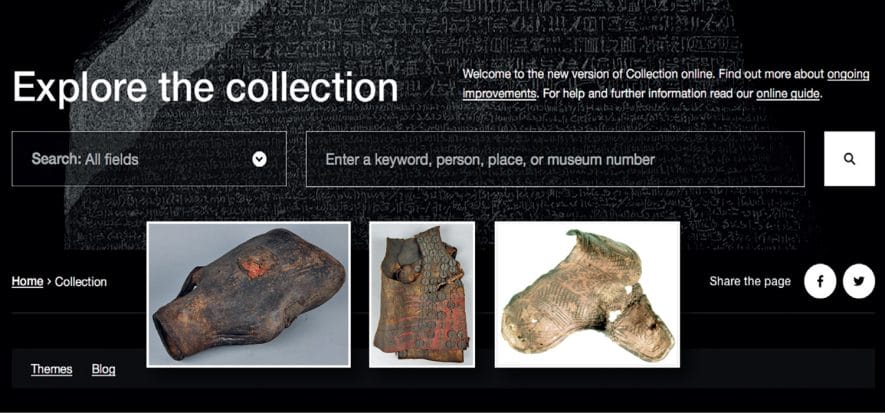Travelling through time while sitting on your couch, at home. You can make this journey thanks to the British Museum, which has recently created an online database containing the whole of its exhibiting archive. We are talking about two million pictures showing closely the Rosetta Stone, Easter Island sculptures and several objects made of leather. Lots and lots of them actually.
Travelling through time while sitting on your couch, at home
While being temporarily closed, due to Covid-19 outbreak, the British Museum decided to open its web doors to the world. The British institution launched the project by creating on purpose its #MuseumFromHome hashtag. They have therefore shared online detailed information on 4.5 million objects: nearly 2 million of them are furnished with photos on which one can zoom to find out plenty of details. “We are happy to unveil this outstanding innovation. We hope these important items will successfully provide inspiration, thinking tips or just some fun while enjoying valuable silence, in such difficult days”, pointed out director Hartwig Fischer in a press release.
A leather world
If you flick through the collection, you will realize that it also includes more than 10,000 finds made of leather, either completely or to a certain extent. They have rediscovered such leather objects in every corner of the world. They illustrate several aspects of daily, military, social and artistic life of peoples upon Earth, from the past ages to the present days. In other words, a real leather world. While browsing through this precious treasure chest, travellers can spot various types of materials, coming from different geographical areas, and, consequently, animals originally living in those places.
A lot of leather indeed
There are reptile leather armours, fish skin amulets, caribou leather heavy overcoats and reindeer headdresses. Furthermore, there are also some components made of leather taken from hunted animals, tanned and subsequently cut in order to create some tools. Among others, for example, some laces used by American Indians to tie sharp stones around their sticks and make therefore weapons and tools. Moreover, you can see some braided and woven leather baskets discovered in Yemen. Not to mention a few precious details, such as the upholstery of some book covers: by using watercolour technique, they tell us about habits and traditions of the Mughal’s Indian dynasty. In addition, some British watchmaking cases, which date back to the early 1900s. Finally, an altitude measurement device made in Germany in the seventeenth century.
Reda also:
- Lineapelle’s cultural mission: click here and find out more
- Russian Atlantis and the tomb of an ancient leather goods designer










